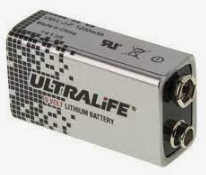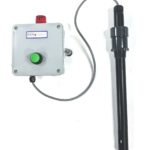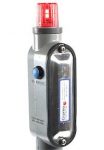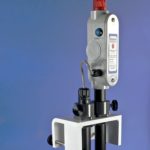LIQUID LEVEL ALARMS for tanks.
Better liquid level alarms…
…for water tanks, fuel tanks, oil tanks and chemical tanks. High liquid level or low level. Generally our liquid level alarms use a float switch to sense liquid level because we like the inherent reliability of float switches. To further enhance this long-term reliability of float switches, all our tank alarms include our unique float guards. These guarantee the float switches cannot get damaged or stuck. We have provided these liquid level alarms for tanks as small as 1 gallon, to 100,000 gallons. And we have made them in any material needed, from polypropylene, PVDF, stainless steel and Teflon.
In addition to being reliable, float switches are inexpensive, simple since they require no calibration, and flexible because they are easily reversible.
We prefer battery
DIFFICULT SENSING
Although our most popular liquid level alarms above are the float-switch based units, we have a solution for almost any liquid level sensing. In particular, there are applications that are difficult for float switches like highly viscous liquids, or liquids that coat, or crystallize, or liquids containing ferrous metal particles are a problem for magnetic float switches. For these problem applications we like to replace the float switches with capacitive sensors. These sense the liquid at a distance. (non-contact sensor) Here is a link to a discussion on the different types of level sensing technologies and why we prefer capacitive sensors are our next-best choice for line-powered applications after float switches. Principle of operation of capacitive sensors.




